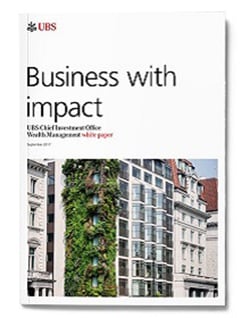Business with impact
19 September 2017 | 8 min read
We’d like to meet you
Five steps to becoming a business with impact
Five steps to becoming a business with impact
Example:*
A private fashion retail chain partnered with its corporate foundation, a government development agency, and a consulting group to raise worker conditions and productivity simultaneously.
The collaborators designed a program to improve worker-manager relations and train workers in lean manufacturing.
Total take home pay rose 15%, providing a social return to employees – while productivity rose by 20%, generating commercial returns.
Example:*
Firms like Unilever realize that long-term investors want long-term business thinking and behavior.
The company does not believe that there needs to be a trade-off between sustainability and profits, but acknowledges short-term financial pressures can distract from doing well for society and the environment.
Unilever has sought to address these pressures by ending earnings and quarterly reporting, focusing instead on integrated reporting and matching executive pay to long-run performance.
Example:*
Mountain Hazelnut’s business model was founded with a vision for generating social and financial return objectives in tandem.
Making hazelnut samplings available to Bhutanese farmers can diversify farmers’ income streams and protect against environmental damage.
The business evaluates financial, social, and environmental returns to adjust its strategy with the aim of doing well for society… as well as its investors.
Example:*
Impact investors have worked extensively on measuring social and environmental return opportunities (and risks) in supply chains.
One firm, developed by researchers at MIT, marries blockchain technology with supply-chain analysis.
This allows firms to see more easily across complex supply chains, and to identify areas where investment could generate financial profits and positive social or environmental outcomes for society.
Example:*
Top Glove Corporation Bhd introduced an oral hygiene initiative to promote better employee health and wellbeing while saving costs through absenteeism.
The firm expanded its health program to include health monitoring, investment in sports facilities, and nutritionist-designed food in company canteens.
Top Glove is sharing its best practices in externally-run, research-based studies with bodies ranging from insurers and universities to the Malaysian Ministry of Health.
Join the business with impact conversation on Twitter #YouCanAdapt.
The content marked with an asterisk(*) has been approved as marketing material. The content on this page is not subject to the legal provisions governing the independence of financial research. It is therefore possible that the recommended solutions do not fully reflect the views of UBS Chief Investment Office WM.
Other articles you might like
Other articles you might like
For more detail download the full report
We’d like to meet you
We’d like to meet you
Come and see us so we can tell you more about us.







